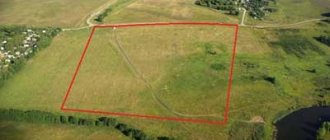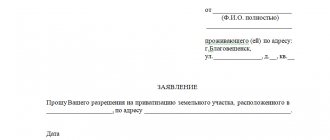Do we challenge and invalidate the result of land surveying of an adjacent land plot?
Regarding one of the disputes regarding the establishment of an adjacent boundary of land plots, the reclaiming of a part of a land plot, the obligation to move a fence, the Supreme Court of the Russian Federation in its ruling dated November 24, 2015 No. 58-KG15-14 indicated: “The lack of agreement on the boundaries of the defendant’s land plot with the plaintiff may indicate invalidity of the results of land surveying by Kuznetsova E.V. At the same time, the court has the right to assess this circumstance when considering a dispute about establishing boundaries, which does not require the plaintiff to independently challenge the land management case or the actions of the cadastral engineer. The claims made by the plaintiff are within the framework of such a method of defense as restoration of the situation that existed before the violation of the right to a land plot, and the suppression of actions that violate the right to a land plot or create a threat of its violation (Article 60 of the Land Code of the Russian Federation).”
The Presidium of the Moscow Regional Court, in its resolution dated October 21, 2015 No. 513, in the case of the exclusion from the state real estate cadastre of information about the location of the boundaries of a land plot, indicated that “... the plaintiffs chose a method of protecting the violated right by filing a claim for the exclusion of information about the location of boundaries from the State Property Code a plot of land that does not contradict the norms of current legislation.”
Invalidation and exclusion from the state real estate cadastre of an erroneous description of the location of the boundaries of a land plot does not constitute a correction of a cadastral error in the information in accordance with Art. 28 of the Federal Law of July 24, 2007 No. 221-FZ “On the State Real Estate Cadastre”. This is a separate and independent method of protection, although it is used in connection with the presence of a cadastral error.
For example, in the resolution of the Presidium of the Moscow Regional Court dated August 5, 2015 No. 367 in the case of failure to interfere with the installation of a fence in accordance with the cadastral boundaries of a land plot, the obligation to move the building was given the following explanation: “Within the meaning of the above provisions of paragraphs. 1 and 4 tbsp. 28 of the Federal Law “On the State Real Estate Cadastre”, an error reproduced in the state real estate cadastre, made by a person performing territorial land management work regarding the location of the border (coordinates of characteristic border points) of a land plot, is a cadastral error and in the event of a dispute about the correctness of the description boundaries, the basis for making the necessary changes to the information of the State Property Committee on the location of the land plot will be a court decision to establish the disputed boundaries of the plot in specific coordinates. In this case, while resolving the dispute and satisfying, as indicated by the court, partially the counter-claims of P.N., the court did not actually resolve the dispute on the merits, did not establish the adjacent border of the parties’ land plots, which was what their claims were stated, and did not enter information about their changes in the State Tax Code data, i.e. did not correct the cadastral error, but completely excluded from the State Property Committee information about the description of the boundaries of plot No. 122, owned by the plaintiff, and plot No. 126, owned by the defendant. Such a decision is not based on the above norms of substantive law, which do not provide for the exclusion of information about the location of the boundaries of a land plot from the state real estate cadastre as a method of correcting a cadastral error, when one is established. The court also committed violations of procedural law, which significantly influenced the result of the decision. In accordance with Part 3 of Art. 196 of the Code of Civil Procedure of the Russian Federation, the court makes a decision on the claims stated by the plaintiff. The court may go beyond the stated requirements in cases provided for by federal law. In connection with the dispute that arose between the parties, no demands were made to invalidate and exclude from the State Property Code information on the description of the location of all boundaries of the parties' plots, just as no demands were made to invalidate the results of land surveying. Having resolved the dispute by excluding from the State Property Code information about the description of the location of the boundaries of land plots, the court without legal grounds went beyond the stated requirements of the parties.”
Restoring the situation that existed before the violation of the law by invalidating and excluding from the state real estate cadastre an erroneous description of the location of the boundaries of a land plot is due to the existence of a dispute about the boundaries of land plots. Therefore, as a general rule, it should be applied in connection with and simultaneously with a claim to establish the boundaries of a land plot. I must admit that the question of the relationship between these methods of protecting civil rights requires more detailed and in-depth theoretical study. Now I express my opinion based only on considerations of practical expediency.
In paragraph 1 of the Bulletin of Judicial Practice of the Moscow Regional Court for the first quarter of 2015 (approved by the Presidium of the Moscow Regional Court on June 17, 2015) the following example is given: “S. filed a claim against V. to exclude from the State Property Code information about the coordinates of the turning points of the boundaries of the land plots owned by the defendant, asked to establish the coordinates of the turning points of the land plot belonging to her, and also to recognize the defendant’s residential building as subject to transfer from the border separating their plots. She motivated the claim by the fact that during the land surveying work on her plot, an overlap of the cadastral boundaries of the defendant’s land plots with her plot was established, which is an obstacle to the registration of the plaintiff’s plot with cadastral registration. At the same time, she did not sign the act of approving the boundaries of the defendant’s plots, and the cadastral boundaries do not correspond to actual use. ...The expert opinion, in connection with a cadastral error, established the imposition of the cadastral boundaries of the defendant’s land plots on the actual boundaries of the plaintiff’s plot with a shift of 9 meters relative to their actual location. Refusing S.'s claim regarding the exclusion from the State Property Code of information about the boundaries of plots owned by the defendant and establishing the coordinates of the turning points of the plaintiff's land plot, the court came to the conclusion that the plaintiff had chosen the wrong way to protect the violated right, since the cadastral error can be corrected by making appropriate changes to the State Tax Code information. The appellate court agreed with this conclusion, pointing out that the boundaries of the plaintiff’s land plot were not established, and her title documents did not contain information about the location of the boundaries of the land plot. In canceling court decisions in this case, the Presidium pointed out the incorrect application of substantive law by the courts: paragraphs. 4 paragraphs 2 art. 60 of the Land Code of the Russian Federation, by virtue of which the plaintiff, being the owner of a land plot, has the right to demand the elimination of any violations in the possession, use and disposal of the plot belonging to her. ...The court also did not take into account that S. asked to establish the coordinates of the turning points of the land plot owned by her, which would have made it possible to enter information about her plot into the State Property Committee and this method of protecting the right does not contradict the requirements of the current legislation.”











